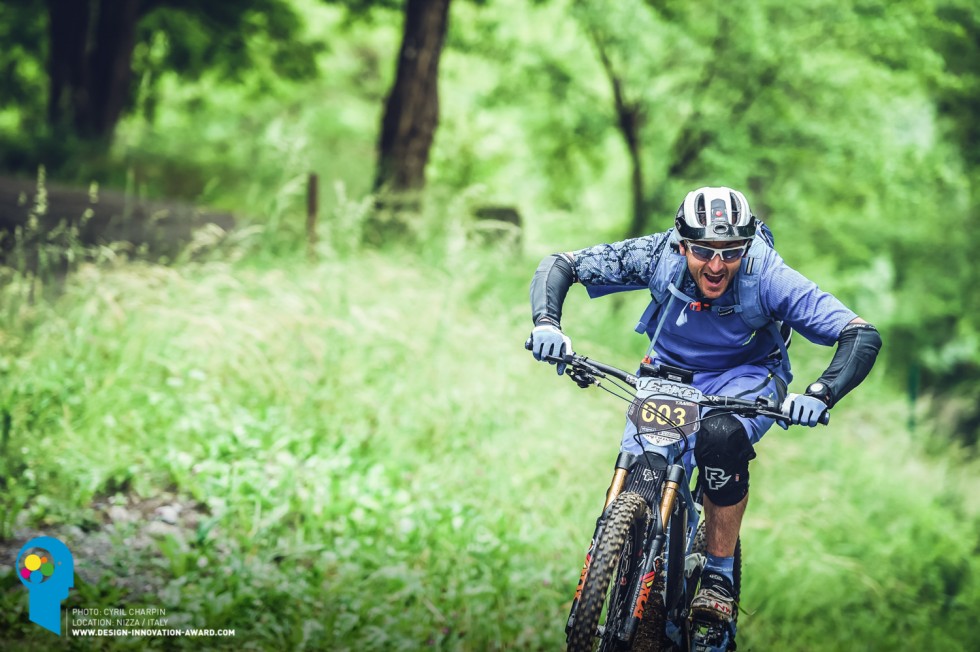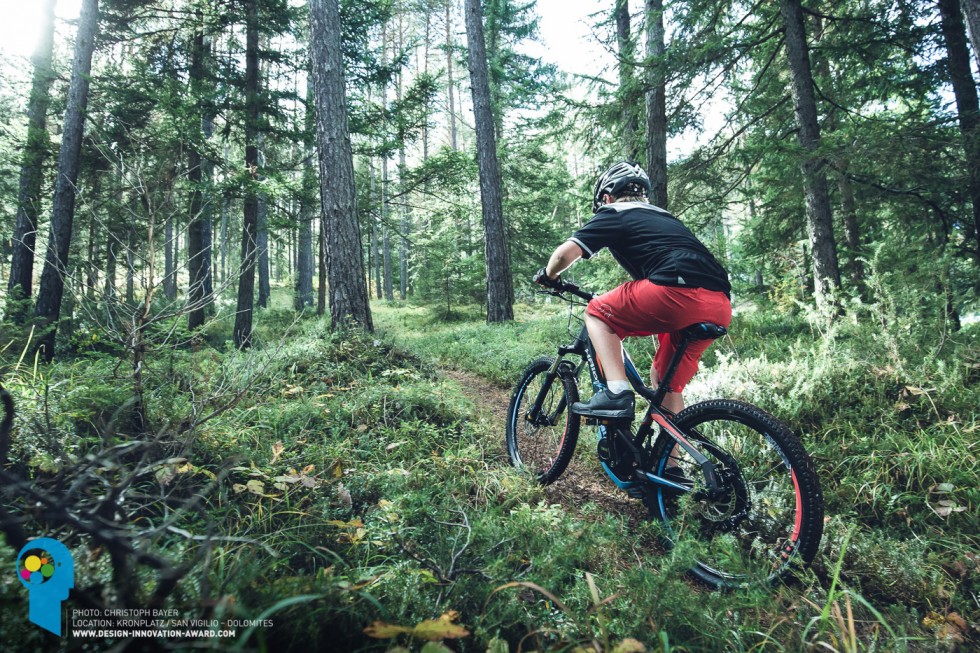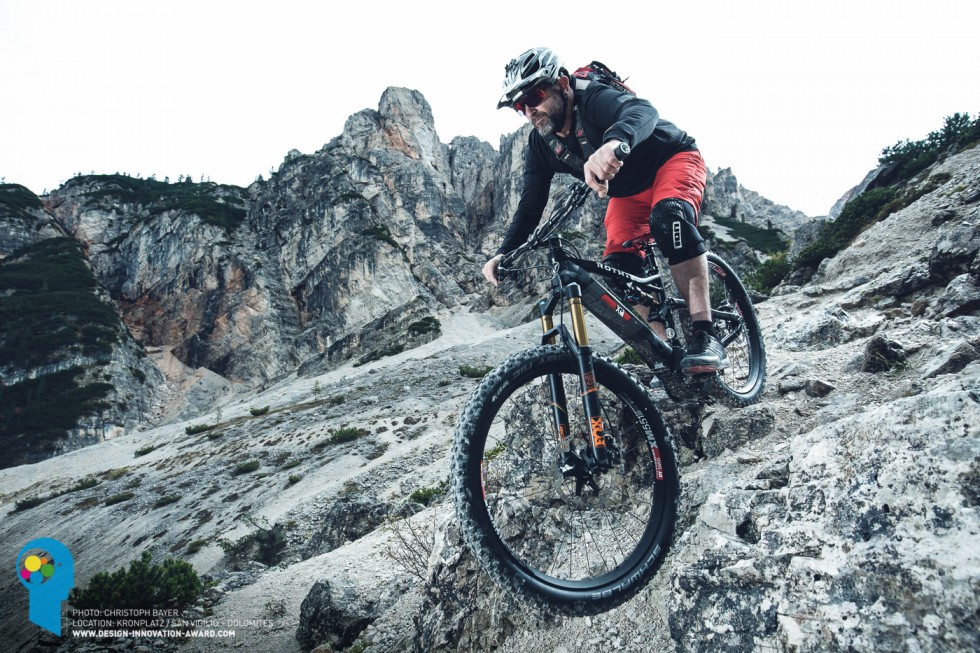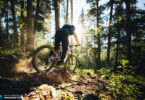
Love them or hate them, electric mountain bikes are here to stay! As their presence gets stronger and stronger, they have evolved from ugly and weird looking bikes with a clumsy electric block hung from the frame, to sleek, integrated bikes, sporting high-end components, built in motors and power beyond comprehension. So the big question is: What’s next?

We remember a couple of years ago when we saw the first generation of E-MTB’s, they looked disgusting with wires hanging out everywhere. They were big heavy bikes with the cheapest of components, extra long stems, desperately short top tubes and possessing geometry that would look perfect on a 90’s XC bike. But opinion is changing, in 2014 a massive 48 % of ENDURO magazine readers categorically refused to consider the notion of E-MTBs but in 2015, that number had dropped to just 22 % (data gained from our reader survey). Next year E-MTB’s will have their own racing category, driving innovation and development.

During the Design & Innovation Award 2016 we could understand why, as we were exposed to a very different vision of the future. The Specialized Turbo Levo FSR Expert 6Fattie and Rotwild RX+ FS 27.5″ EVO 2016 have taken the sport to the next level, boasting higher volume Plus sized tyres, integrated cables and batteries and engines that blend seamlessly within the silhouette. But the biggest step forward is more than skin deep, both bikes now feature progressive geometry and high-end enduro bike components, far removed from the ungainly models that preceded them.

DI.A Jury Member Alex Thusbass (pioneering E-MTB designer) recounts “I remember the first Eurobike show in 2010, the reaction was like ‘what the hell is that?’ Competitors were coming to our booth and literally laughing at us, but the difference was in the consumers; some of them saw these bikes, gave them a try and quickly realized they are just fun. Of course, over the years there was a lot of controversy with these bikes, they were something completely new, but they used a lot of mountain bike parts. The familiar parts linked them to the mountain bike scene, so some people were naturally offended by it. But once you do a mind shift and stop comparing them to mountain bikes, you can accept that this is just something completely separate, then they make sense.”

“We feel that in America at the moment they are absolutely against it. At this year’s Interbike there was this one guy from IMBA (International Mountain Bike Association), he said ‘look, I hate them, but I want to try one, so I can get a real opinion.’ He tested it, came back and said ‘sorry guys, now I get it, it’s more like a mountain bike, but it isn’t a mountain bike, it’s something new and something separate, maybe I have to rethink my opinion.’ So, OK, he won’t buy the bike because he’s a mountain biker, but he realized E-MTBs won’t kill normal mountain bikes; this isn’t possible. I think the best comparison is when you look back to the beginning of the 20th century at the first motorbikes. These looked like bicycles with a motor in, a few years later and if you look at what they have become they are completely different, nobody would ever compare a Yamaha, Moto Guzzi or a Harley Davidson to a bicycle because they have gone their own way.”

But the tide is turning and nothing changes public perception quicker than an endorsement from sporting legends. With many more elite enduro racers like Nico Vouilloz and Anne-Caroline Chausson championing the use of E-MTB’s for training and enjoyment, we are seeing a shift from outright dismissal to curiosity. For the 2016 race season, lots of enduro race organizers are now introducing E-MTB categories, reflecting this shift in the tide of opinion. Their importance in racing probably won’t be taken too seriously, at first, a novelty at best, but that is the same as any racing in it’s early days, like DH at the XC events back in the 90’s and the early days of enduro.
We asked DI.A Jury Member and bike engineer, Ruben Torenbeek for his thoughts on the changing perception of E-MTB’s in the racing world. “I think if you take an E-MTB and try to do the same as on a mountain bike, that’s the wrong approach, you need to take the bike, see what it is capable of and design the racing around that. The whole thing is just so open at the moment we need to see where it goes. I think people already accept it as a type of riding. Ten years ago when I lived in Holland electric power was huge for older people, but we are now a fair way away from that use of E-bikes. Of course, there are the haters, but I think there is always going to be some basic human instinct; like when you have an opposing football team and you give a bit of abuse to the other team because they are rivals. Also, if you’re a roadie you will give the mountain bike rider some abuse, the same for an XC rider to a DH rider, but it’s all on a fun level with no real harm meant and that will probably always be the same.”

So why confine E-MTB’s to conventional mountain bike racing, why not embrace the unique properties of power of a motor. Alex Thusbass can see a different future for power assisted racing. “I see so many directions it could go in because you have the DH E-MTB now for much more aggressive courses with climbs. You could have extreme XC with a multi-lap format, then, of course, you even have the road going versions, which too could be a racing discipline all on its own. Then, of course, you have the minefield of the speed restrictions, maybe on private land you could have unrestricted races? The most important thing is that any new race concept has to reflect the specific product and keeping in mind that the E-MTB is also about going uphill. I mean one of the first discussions is about the DH E-bike, and what it’s for? Going downhill, the motor is almost useless. But if you think about a downhill that isn’t just specific downhill, but has a completely different type of terrain with technical uphills too, then this would be ideal for such a bike. As I always say, the most important thing is that we mentally separate E-MTBs from traditional MTBs, as they are not the same and it’s not motocross either, it’s something in between”.

So where does that leave us? One thing is for sure, our discussion has changed from ‘what the hell are these monstrosities?’ to ‘what is the future of E-MTB’s and where can they go?’ Every debate leads to new thoughts, and then endless possibilities and questions arise. Is it in the best interest for E-MTB’s to start looking like traditional bikes, pretending to be something they are not, or should they champion with their own unique style? In fact, why do E-MTB’s need to feature MTB parts at all, should they not have their own specific gearing, brakes, and suspension? What about phone and GPS device compatibility, motor-shut-down security, built-in lights? With power, almost anything is achievable.
This being said, it’s clear that we can’t just copy our experience from traditional mountain biking and transfer it to E-MTBs. E-MTBs are something different, and that applies to riding and racing as much as to how we design and equip E-MTBs. If E-MTB’s embraced their own identity they would be free to push the boundaries of what’s possible, unshackled from the restrictions of conventional bike design.
More information about the Design & Innovation Award 2016 is just a click away
Words: Jim Buchanan Photos: Cyril Charpin, Christoph Bayer
Did you enjoy this article? If so, we would be stoked if you decide to support us with a monthly contribution. By becoming a supporter of ENDURO, you will help secure a sustainable future for high-quality mountain bike journalism. Click here to learn more.









